
We flew to Athens; David Corfield flagged us down as we passed through customs, and we took the 2-hour ride to Delphi in a van with some other arrivals. Delphi is perched on the slopes of Mount Parnassus, with a view of the Bay of Corinth. It's a dramatic place:

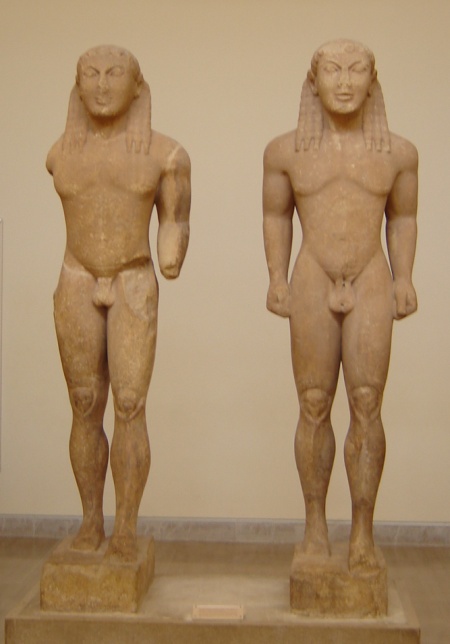
Two kouroi
from around 600 BC.
These guys are big: over 2 meters tall.
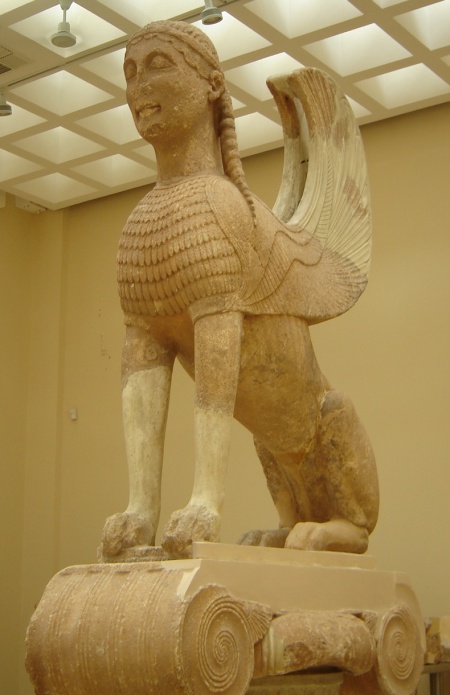
The Naxian sphinx, from around 570 BC.
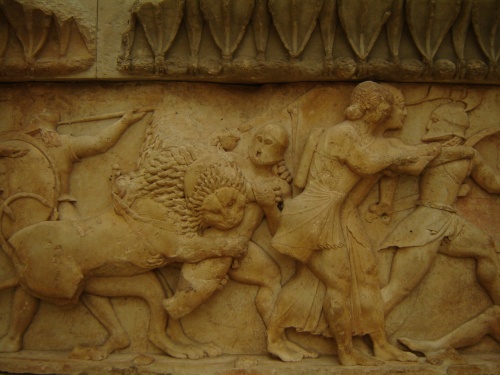
Part of the frieze from the treasury of Siphnos, from
525 BC.
This scene depicts the battle of the gods and the titans.
Many Greek cities donated wealth to Delphi, which was kept
in treasuries.
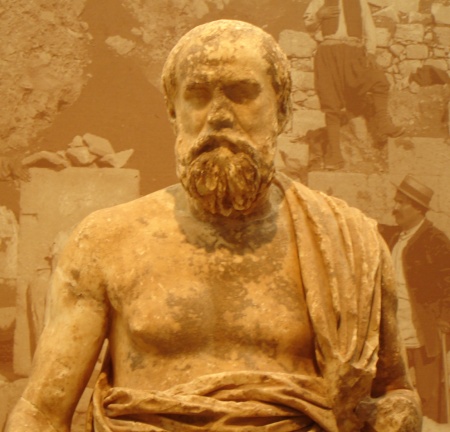
Statue of a philosopher, from around 280 BC.
Then, some pictures from the oracle itself. This is a truly mind-blowing place, both for its rugged natural beauty and the mythology and history behind it. The Oracle of Delphi played an important role in Greek culture for over a millennium: from around 750 BC to around 400 AD. That makes it one of the longest-lived institutions in the world!
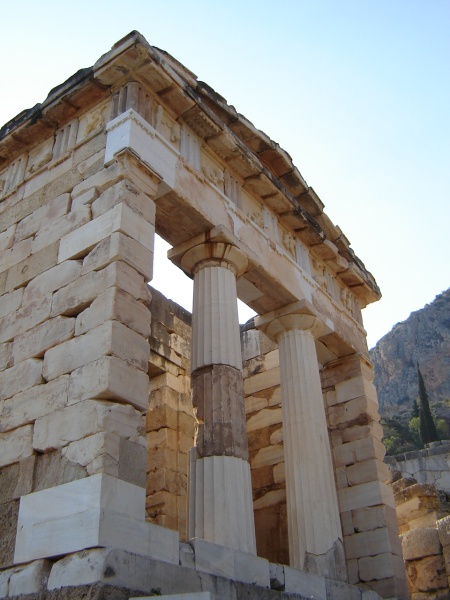
Treasury of
Athens, built around 490 BC to commemorate the Battle of
Marathon.
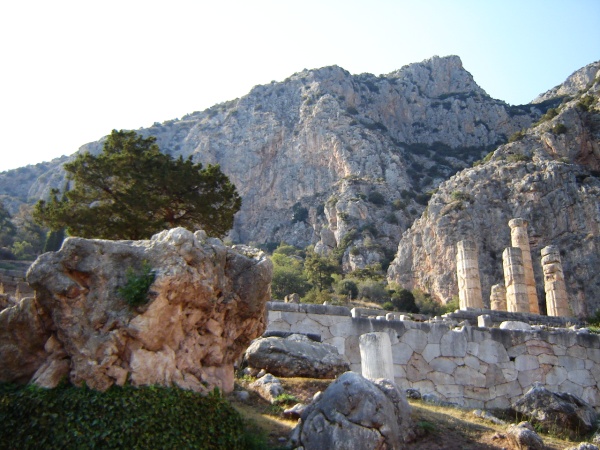
Stone of the Sibyl, at left. Temple of Apollo, at right.
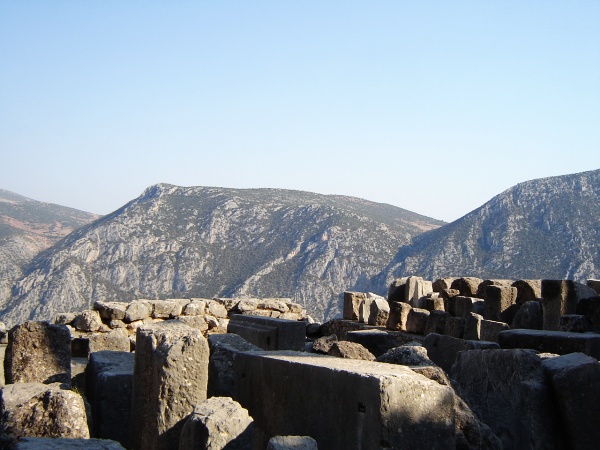
Stones near the Temple of Apollo.
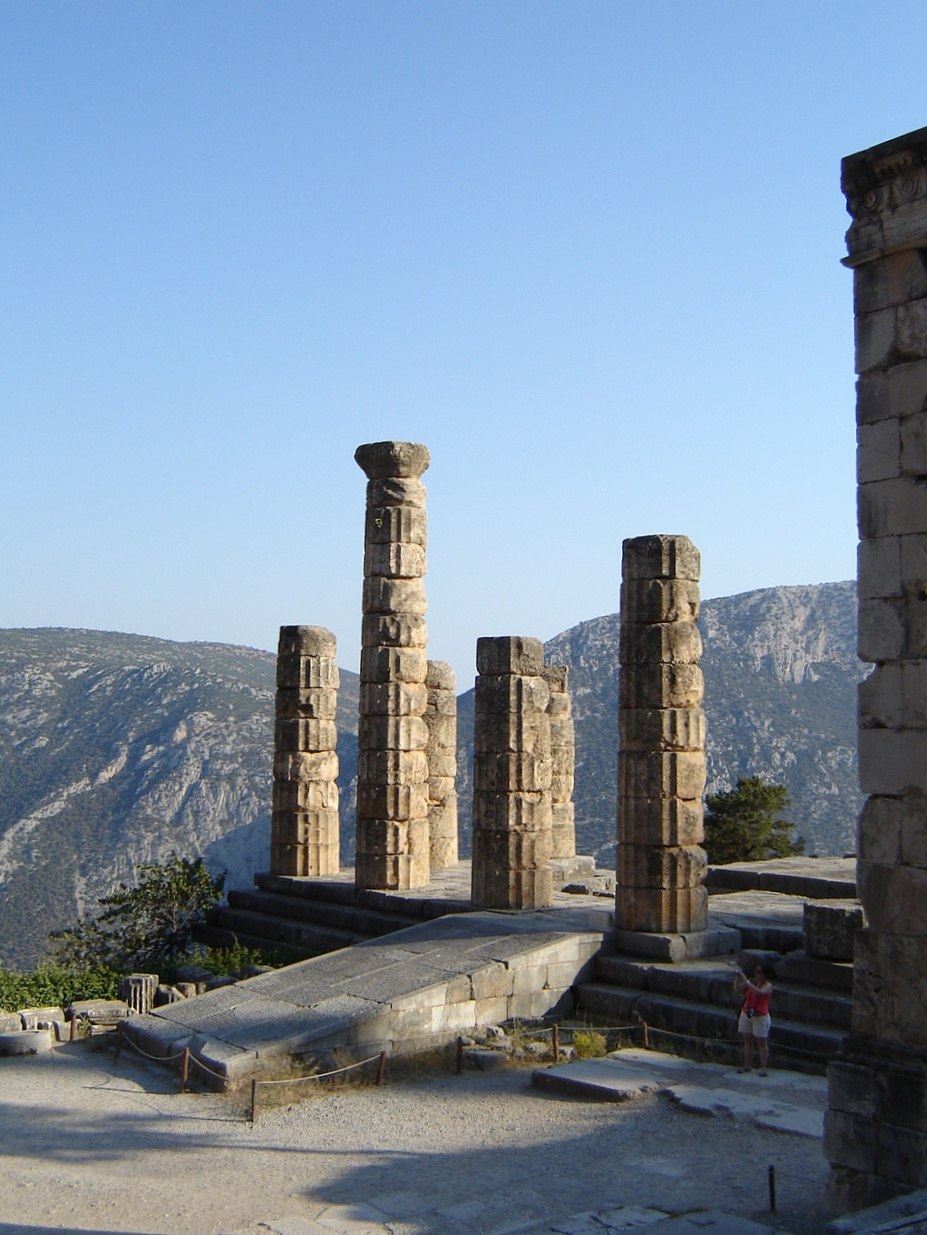
The Temple of Apollo.
This temple is where the Pythia actually did her thing.
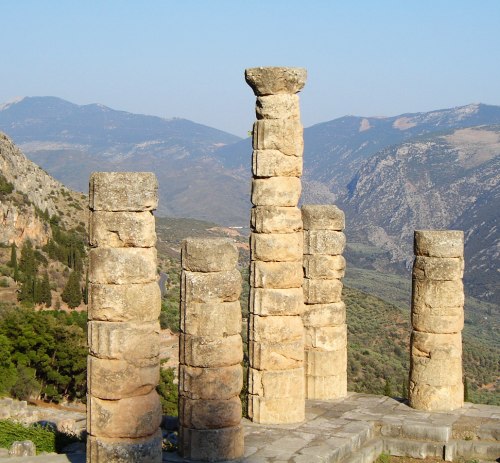
Another view of the
Temple of Apollo.
The temple of Apollo, cradled in the spectacular mountainscape at Delphi, was the most important religious site of the ancient Greek world, for it housed the powerful oracle. Generals sought the oracle's advice on strategy. Colonists asked for guidance before they set sail for Italy, Spain and Africa. Private citizens inquired about health problems and investments. The oracle's advice figures prominently in the myths. When Orestes asked whether he should seek vengeance on his mother for murdering his father, the oracle encouraged him. Oedipus, warned by the oracle that he would murder his father and marry his mother, strove, with famous lack of success, to avoid his fate.The article then goes on to describe how the theory that vapors emitted from the ground was discredited around 1900. But now, thanks to the work of these authors, this theory has been confirmed!The oracle of Delphi functioned in a specific place, the adyton, or "no entry" area of the temple's core, and through a specific person, the Pythia, who was chosen to speak, as a possessed medium, for Apollo, the god of prophecy. Extraordinarily for misogynist Greece, the Pythia was a woman. And unlike most Greek priests and priestesses, the Pythia did not inherit her office through noble family connections. Although the Pythia had to be from Delphi, she could be old or young, rich or poor, well educated or illiterate. She went through a long and intense period of conditioning, supported by a sisterhood of Delphic women who tended the eternal sacred fire in the temple.
The Classical Explanation
Tradition attributed the prophetic inspiration of the powerful oracle to geologic phenomena: a chasm in the earth, a vapor that rose from it, and a spring. Roughly a century ago scholars rejected this explanation when archaeologists digging at the site could find no chasm and detect no gases. The ancient testimony, however, is widespread, and it comes from a variety of sources: historians such as Pliny and Diodorus, philosophers such as Plato, the poets Aeschylus and Cicero, the geographer Strabo, the travel writer Pausanias, and even a priest of Apollo who served at Delphi, the famous essayist and biographer Plutarch.Strabo (64 B.C.-A.D. 25) wrote: "They say that the seat of the oracle is a cavern hollowed deep down in the earth, with a rather narrow mouth, from which rises a pneuma [gas, vapor, breath; hence our words "pneumatic" and "pneumonia"] that produces divine possession. A tripod is set above this cleft, mounting which, the Pythia inhales the vapor and prophesies."
Plutarch (A.D. 46-120) left an extended eyewitness account of the workings of the oracle. He described the relationships among god, woman and gas by likening Apollo to a musician, the woman to his instrument and the pneuma to the plectrum with which he touched her to make her speak. But Plutarch emphasized that the pneuma was only a trigger. It was really the preconditioning and purification (certainly including sexual abstinence, possibly including fasting) of the chosen woman that made her capable of responding to exposure to the pneuma. An ordinary person could detect the smell of the gas without passing into an oracular trance.
Plutarch also recorded a number of physical characteristics about the pneuma. It smelled like sweet perfume. It was emitted "as if from a spring" in the adyton where the Pythia sat, but priests and consultants could on some occasions smell it in the antechamber where they waited for her responses. It could rise either as a free gas or in water. In Plutarch's day the emission had become weak and irregular, the cause, in his opinion, of the weakening influence of the Delphic oracle in world affairs. He suggested that either the vital essence had run out or that heavy rains had diluted it or a great earthquake more than four centuries earlier had partially blocked its vent. Maybe, he continued, the vapor had found a new outlet. Plutarch's theories about the lessening of the emission make it clear that he believed it originated in the rock below the temple.
A traveler in the next generation, Pausanias, echoes Plutarch's mention of the pneuma rising in water. Pausanias wrote that he saw on the slope above the temple a spring called Kassotis, which he had heard plunged underground and then emerged again in the adyton, where its waters made the women prophetic.
Plutarch and other sources indicate that during normal sessions the woman who served as Pythia was in a mild trance. She was able to sit upright on the tripod and might spend a considerable amount of time there (although when the line of consultants was long, a second and even a third Pythia might have to relieve her). She could hear the questions and gave intelligible answers. During the oracular sessions, the Pythia spoke in an altered voice and tended to chant her responses, indulging in wordplay and puns. Afterward, according to Plutarch, she was like a runner after a race or a dancer after an ecstatic dance.

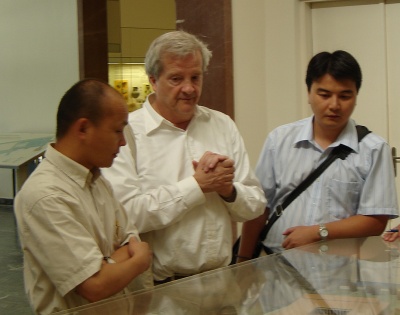
Olympia is a site with many historical layers. Burnt offerings can be found dating back to the 10th century BC. Tradition dates the first Olympic games to 776 BC. It became a place where Greeks from many cities would meet.
I hadn't known that gryphons were an important symbol of royalty in archaic Greece, going back to 700 BC. They're nasty-looking things — a combination of a lion and an eagle, king of the beasts and the birds. There are lots of bronze casts of gryphon heads at Olympia:

The Temple of Zeus at Olympia was built in the middle of the 5th century BC. It contained an enormous ivory and gold statue of Zeus sculpted by Pheidas, which was one of the Seven Wonders of the World.
I have a fondness for Phidias because the Golden Ratio was named φ ("phi") after him. He designed the Parthenon, and some claim he packed it with Golden Ratio rectangles to make it as beautiful as possible. However, the number (√5 + 1)/2 was only named "the Golden Ratio" around 1826, and only named "phi" in 1914. You can read week203 for the full story. It's not clear Phidias really had much to do with phi. But it's still fun stuff. So, I was pleased to see a cup in the museum with an inscription on the bottom claiming that it belongs to Phidias!
Even bigger buildings were constructed during the Hellenistic period, as well as a long race track. The Romans repaired some buildings including the Temple of Zeus when they took over. But, the site was heavily damaged by earthquakes in the 3rd century AD, and by now none of the original temple still stands:
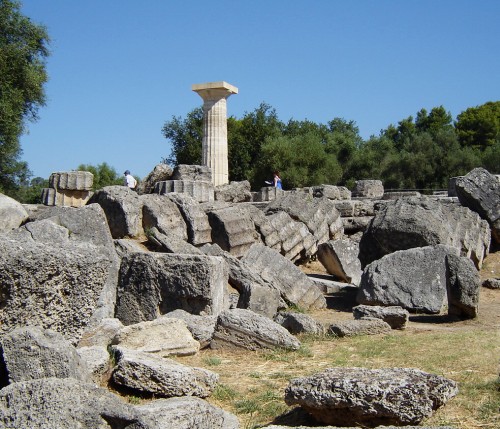
However, the Olympic games were still held
until 393 BC, when the Christian emperor Theodosius I forbid them. So, yet another
institution lasting over a millennium!
July 27, 2007
Lisa's meeting a resounding success, we took a 4-hour bus ride
from Olympia to Athens, arriving around 3 pm. The plan was to
leave for London the next morning, so we spent a night at the
Divani
Palace Acropolis Hotel. This was
a couple blocks south of the Acropolis, not really in the
Plaka area,
but close.
We braved insanely hot weather to climb up to the Acropolis. Here's a brief summary, in the wiseguy style of Wired magazine.
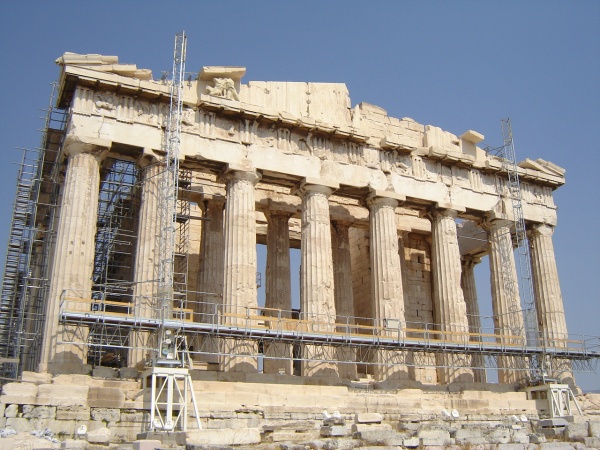
© 2007 John Baez
baez@math.removethis.ucr.andthis.edu